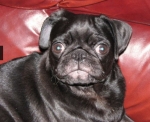To
Okie bipap - Interesting that you didn't have issues adjusting to higher pressure, while your wife did and I do. There is just so much customization that has to happen for every case I guess. Has your asthma improved since starting bilevel pap? I remember that after starting bilevel pap I woke up with mildly sore intercostal muscles and finally felt like I could fully breathe again and I can only imagine how difficult it would have been to deal with asthma on top of sleep apnea induced breathing difficulties.
To
Pugsy - Thanks for responding. I found an old post from you about IPAP and EPAP and I'm trying to follow the logic behind what you told me, because of my curiosity. So in an old post -
posting.php?mode=quote&f=1&p=897522 you wrote
Pugsy wrote: ↑Thu Apr 03, 2014 2:24 pm
In general we have been told that EPAP for obstructive stuff and IPAP for hyponeas.
Snores and FLs are normally an indication of some sort of upcoming collapse of the airway....which may or may not grow up to be an obstructive apnea or hyponea but from what I have seen with my own reports and other peoples...EPAP is sort of like APAP minimum pressure and those pesky snores and FLs go away real easy with just a little more EPAP or APAP minimum.
Stent the airway open better at the base level and those little early signs of an impending collapse just don't happen.
Now how much of it might also depend on is the collapse part of exhale or inhale...I never could figure out how to get a handle on that and to be honest...that's digging real deep and IMHO why not just fix it the easy way first if it needs to be fix.
[...]
Past experience has shown me time and time again that minimum APAP or EPAP minimum...seems to be the most critical setting in not just my situation but in the others that I have helped. Get that minimum APAP (or EPAP minimum) set optimally and the top end doesn't really have to do much.
I prefer PS of 4...3 isn't too bad and 5 isn't either but above 5 PS, I have seen correlation between higher PS and emergence of complex sleep apnea in more than an occasional person. Now most often it has been when PS was fix (like ResMed machine) and people try PS of 7 to 10....which can make a person feel like they are hyperventilating and when looking at the high number of centrals...I guess they did. So that's why I like to keep PS around 4 or so...just as a precaution. Less chance for unstable breathing O2/CO20 exchange causing centrals.
So that's why I suggested a little more EPAP...past experience with hundreds and hundreds of ugly reports that turned beautiful despite what the manual might say would maybe work better.
1) So is this still your line of thinking - increasing epap until things sort of fall into place, while not worrying about ipap too much? and IPAP of 13 and EPAP of 8? (corrected these from before when I accidentally wrote EPAP of 13 and IPAP of 8 - sorry about that!)
2) I guess I'm a little confused on how lowering ipap won't hurt me later in the night, as I'm pretty sure my pressure needs tend to be higher in REM sleep. Wouldn't dropping ipap to 13 result in events in REM that would cause more disturbed sleep? Or is the idea that you don't need as high an IPAP by raising the EPAP because you are catching events before they blow up as you mention in the old post I copied?
I know my sleep doctor mentioned that when EPAP is too low that it takes much longer to climb back up to the IPAP and that can cause people problems....
clearly I don't understand nearly enough about bilevel because my mind is still trying to understand how ipap doesn't do as much as I thought it did. and it would seem
Palerider is thinking along the same lines as you.
Thank you if you have time to explain.
To
Palerider:
Thanks for the tips from a pro about not drawing conclusions from one night and also responding to the question about how there may not be any conclusions to be drawn from preferring mildly higher pressure support.
I hadn't yet logged into cpaptalk to see all the responses from you, Palerider, and Pugsy, and all I knew was that waking up this morning I was exhausted, so I adjusted my machine to have a very high trigger sensitivity and took a nap and that seems to have helped. The nap was at 15/8.6 and it wasn't too bad as far as aerophagia. No central events or obstructive apneas, but I still feel exhausted. But at least no centrals and no aerophagia.
I might sleep with that setting tonight until I better understand bilevel pap for my specific situation.
I also found this gem from Pugsy - that while going by numbers is somewhat helpful, it has also led me astray before, so...
-
My number one goal has always been good sleep first...feel decent...and not a perfect AHI or beautiful report.
Thanks again for all the input everyone. Hope you all had an ok day, and that this technology may help you to sleep peacefully and restfully.
sometimes in order to succeed it just takes one more try. and a lot of frustration along the way.









